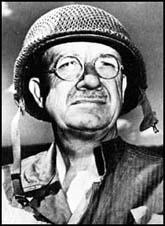Holland Smith

Holland Smith, the son of a lawyer, was born in Alabama, United States, on 20th April, 1882. After studying at the University of Alabama and obtaining a law degree he decided he wanted to become a soldier.
In 1905 Smith joined the US Marines. During the First World War he served in France with the 5th Marine Regiment and in 1918 was awarded the Croix de Guerre.
After the war Smith became an expert on amphibious warfare and in March 1937 he was appointed as director of operations and training at Marine Headquarters in Washington.
On the outbreak of the Second World War Smith took command of the 1st Marine Brigade. Promoted to major general, took his troops to Cuba for training in preparation in case the United States became involved in the conflict. However, it was not until September 1943, that it was decided to use Smith on the front-line he was appointed commander of the 5th Amphibious Corps.
In 1943 Admiral Chester Nimitz began to plan the removal of the Japanese from the Gilbert Islands. The attack force was headed by Vice Admiral Raymond Spruance and his fleet included six aircraft carriers, five light carriers, six new battleships and several smaller warships.
Holland Smith was given the task of attacking the two most westerly of the Gilbert Islands, Makin and Tarawa, on 20th November 1943. Makin, defended by only 800 Japanese soldiers, was taken without too much difficulty.
Tarawa was much more heavily fortified and the 5,000 US Marines that were landed on the first day had to wade ashore under considerable Japanese artillery fire. Further landings took place on the 21st and the island was not made secure until the 23rd November. The capture of these two islands cost nearly 1,000 dead and 2,000 wounded.
The experience convinced the Joint Chief of Staffs that Admiral Chester Nimitz was right to be selective about the islands that should be invaded that were under that control of the Japanese Army.
Promoted to a three-star general, Smith led the US Marines on its assault of Saipan on 18th June 1944. Smith and his troops also invaded Tinian, an island three miles off Saipan. Japanese resistance on the two islands ended on 1st August 1944.
In July 1945 Smith returned to the United States and took control of training at Camp Pendleton, California, until retiring in May 1946 after 41 years military service. Holland Smith died on 12th January 1967.
Primary Sources
(1) Primo Levi, Survival in Auschwitz (1947)
Last spring the Germans had constructed huge tents in an open space in the Lager. For the whole of the good season each of them had catered for over 1,000 men: now the tents had been taken down, and an excess 2,000 guests crowded our huts. We old prisoners knew that the Germans did not like these irregularities and that something would soon happen to reduce our number.
